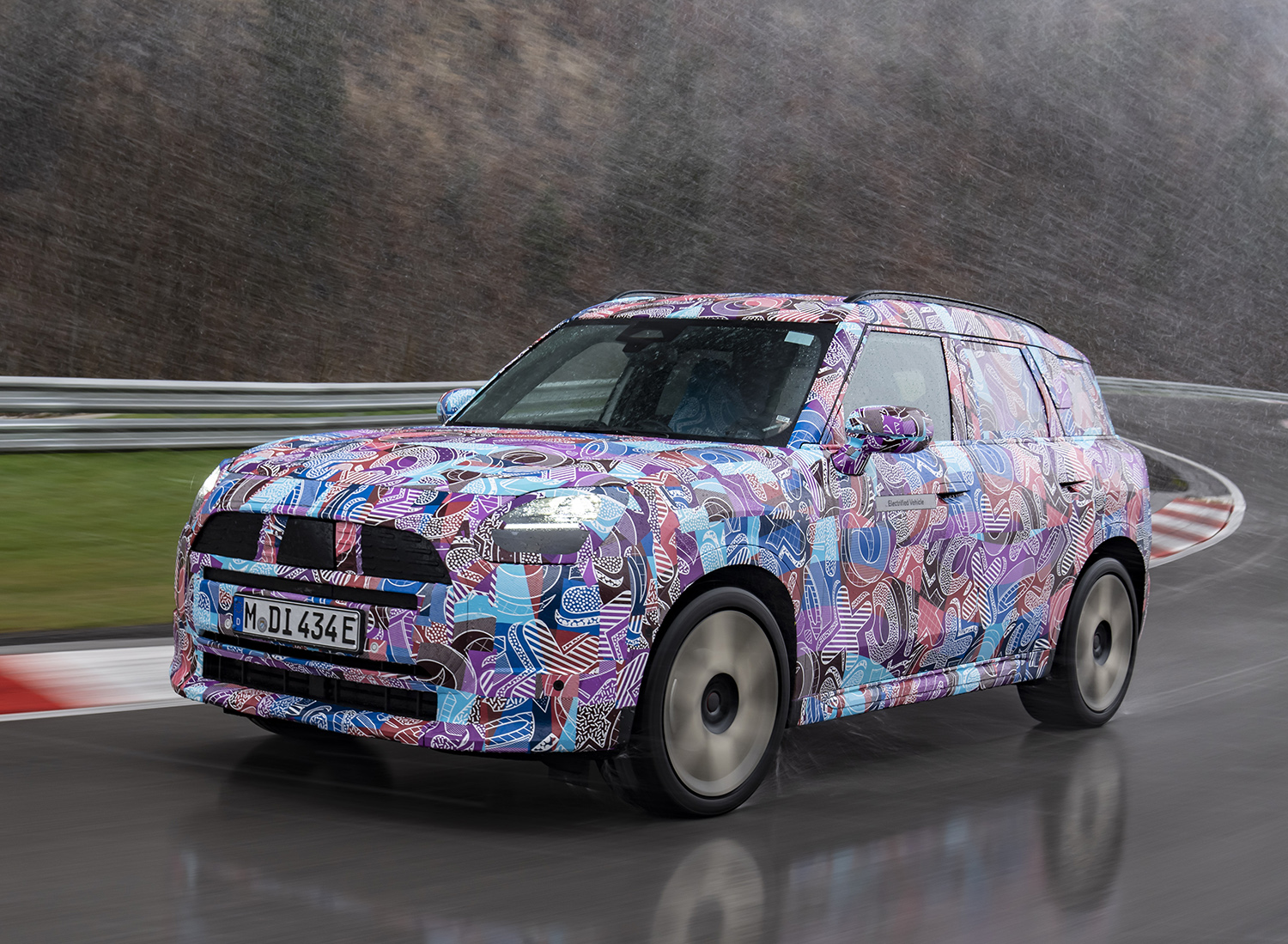Mini has confirmed that the third generation of its Countryman SUV, now an all-electric model, will be available in Canada with 313 hp, with production set to begin in Germany later this year.
The BMW Group previously announced that the latest generation Mini Countryman, which debuted in 2010 as the first ‘Mini’ SUV and the first Mini to measure more than four metres in length – would be the brand’s first all-wheel-drive fully electric vehicle, following the end of production of its predecessor in 2020. While an additional, 191 hp Countryman E base model will be available to European customers, the fierier Countryman SE ALL4 will make its way to Canada in early 2025.

2024 Mini Countryman
The SE ALL4 – available, as the name suggests, as standard with all-wheel drive – will feature two electric motors, one per axle, and be mated with a 64.7 kWh lithium-ion battery to generate a combined 313 hp, “including a temporary boost” for more spirited acceleration. Though an estimated Canadian range has not yet been revealed, European estimates of around 450 km (admittedly for the lower-spec ‘E’ model) suggests the 410 km of the segment-rivalling Volkswagen ID.4 AWD is feasible. The underpinnings will also be shared with parent company BMW’s electric iX1.
Though the official prototype shots obscure most of the new design (we can see a squarer front-end and the remodeled ‘bulbous’ headlamps), Mini states that the Electric has grown in length by 13 cm to 4,429 mm (around 14.5 ft). The height has also gone up almost 6 cm to 1,613 mm (just over 5.2 ft) as Mini looks to improve cabin space for five occupants.

2024 Mini Countryman
Handily, this creates an ‘Aceman’-sized hole in Mini’s product lineup ahead of the electric crossover’s scheduled reveal in 2024. Both models feature heavily in Mini’s plan to go fully electric by 2030.
With a full electric drivetrain comes recycled materials in the build process, of course, and the Countryman Electric is no exception. The dashboards, steering wheel, vehicle headliner and floor mats have all been made from polyester recycled from PET (plastic) bottles and “carpet remnants,” which reduces CO2 emissions in the build process by 85 per cent.
In another Mini staple, the new SUV is said to combine a “minimal ecological footprint” with an “electrified go-kart feeling” (perhaps surprisingly, given that the Countryman, despite its Dakar win record, was never particularly known for its refined handling). Confirmation of that, plus a Canadian starting price, will have to wait until its arrival, however.
Interestingly, when production starts in November, the Countryman E is set to be the first Mini under the BMW banner to be built in Germany, specifically at the Group’s Leipzig plant. Massive renovations have already been completed at BMW’s ‘green plant,’ with four newly constructed wind turbines – each standing 190-metres tall – capable of generating “more than 20 GWh” per year.
Read more: The odd, obscure second-life uses for EV batteries
Second-life batteries from the now-discontinued BMW i3 hatchback are also being used as energy storage hubs as BMW looks to increase ‘e-component production capacity by eight production lines at Leipzig by 2024. A whopping €800 million (just over $1.175 billion) has already been earmarked for the refurb.






